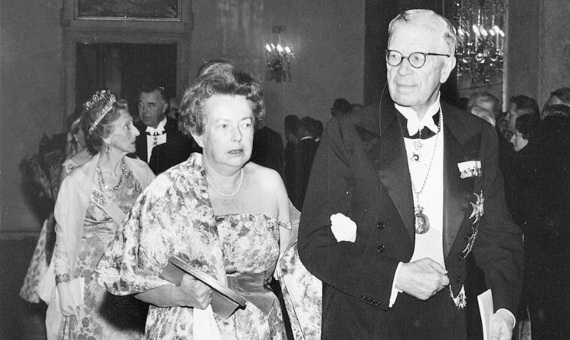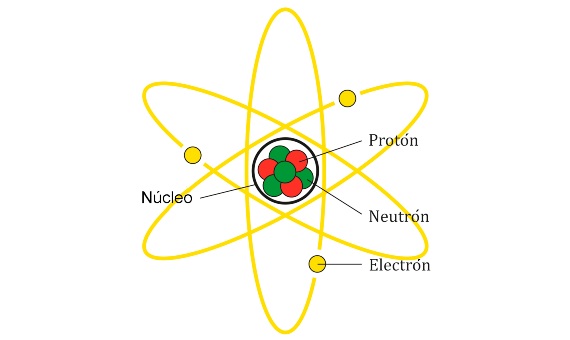It took exactly 60 years from Marie Curie winning the Nobel Prize for Physics in 1903 for a woman to receive the award again. She was Maria Goeppert-Mayer, the German-born scientist who formulated the nuclear shell model that finally made it possible to understand how the nucleus of atoms works. Her mastery of the mathematics that govern quantum mechanics led her to this feat, which was a decisive boost for nuclear and particle physics. Goeppert shone in a field traditionally reserved for men —until 2018 this prize did not recognize another woman— and it was only after a long scientific career “on loan” that she would receive recognition: she spent many years without being paid for her research or her work as a university professor.
This long road, full of obstacles, began when Maria’s father became professor of paediatrics at the prestigious University of Gottingen (Germany), then a world leader in the study of mathematics and physics. It was here that Maria Goeppert-Mayer (28 June 1906 – 20 February 1972) chose her vocation. In 1924 she passed the university entrance exam and was admitted as a student of mathematics, but that initial interest soon clashed with that aroused by quantum physics, then in a golden age, after attending a seminar given by Max Born. Eventually, Maria decided to study physics; however, she never gave up her first passion and, in fact, her solid mathematical background was a formidable ally throughout her career, allowing her to reach theoretical explanations of processes that could not be proven experimentally until many years later.

From volunteer to the Manhattan Project
After completing her studies, she graduated with an innovative thesis in which she theoretically explained the double photon process (the simultaneous absorption of two photons by an atom), something that would only be confirmed experimentally three decades later. That same year, in 1930, she married Joseph Mayer, an American chemistry student, and emigrated to Baltimore (USA), where her husband had been hired by Johns Hopkins University. That move marked the beginning of a paradoxical professional career. While her more-renowned colleagues valued Maria’s talent and looked forward to her collaboration, for years no academic institution offered her a paid job. She accompanied her husband on a tour of various American universities and volunteered in their physics departments so that she could continue her research.
Between moves, she was able to work with Enrico Fermi at Columbia University, with whom she established a relationship that proved to be decisive in her career. It was the brilliant Italian physicist who suggested that she study the internal structure of atoms in depth. In 1941 she received her first job offer as a science teacher at Sarah Lawrence College, and the following year she began working as a researcher with the aim of obtaining uranium-235 as part of the American atomic program. Her participation in the Manhattan Project also led to a stay in 1945 at Los Alamos, where she collaborated with Edward Teller in research to develop the hydrogen bomb.
A waltz of neutrons and protons
In 1946 the Mayers moved again, this time to the University of Chicago, where Joseph was given a professorship in the new Institute for Nuclear Studies (today the Enrico Fermi Institute). Soon after, at Fermi’s urging, Maria was recruited as a senior physicist at the brand-new Argonne National Laboratory. There she began to study the origin and formation of the atoms of the various chemical elements, based on the composition of their nucleus. This was one of the hottest questions in science at the time, and it was striking that there were “magic numbers” (2, 8, 20, 28, 50, 82 and 126) of nucleons: atoms with these specific numbers of neutrons and protons were much more stable and abundant than the rest. Until then, the scientific community generally viewed the atomic nucleus as like a drop of liquid, a homogeneous mixture. However, Maria Goeppert saw clearly that, within the nucleus, protons and neutrons were distributed in shells, according to their energy level. These shells could explain the magic numbers, but something still didn’t quite fit: the repulsive forces between these nucleons are so high that such an ordered structure seemed impossible.

She and Fermi argued about it over and over again, until one day he gave her the key clue: “Is there any indication of spin orbit coupling?” he asked her. Thanks to her mathematical ability, Maria Goeppert was able to immediately work out a proof that this was the case: the nucleus was made up of closed shells, in which pairs of neutrons and protons tended to couple together, “like in a waltz in which some dancers spin in one direction and others in the opposite,” as she liked to explain.
That idea, and above all her mathematical proof, won her the Nobel Prize for Physics in 1963. Shortly before that, in 1960, she had finally achieved a position commensurate with her merits, as a professor at the University of San Diego. There, the local newspaper announced Maria Goeppert’s prize with a headline that was typical of a strange event: “SD Mother Wins Nobel Prize“.
Comments on this publication